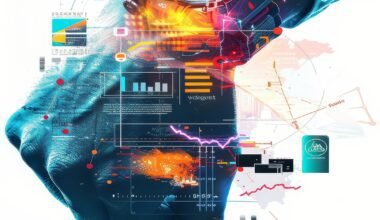Summary: Probabilistic model in Machine Learning handle uncertainty and complex data structures, improving decision-making and predictions. Discover their key types, applications, and benefits for various fields.
Introduction
Machine Learning models are essential tools in Data Science, designed to predict outcomes and uncover patterns from data. Among these, the probabilistic model in Machine Learning stands out for its ability to handle uncertainty and incorporate prior knowledge.
This blog explores the fundamentals of probabilistic models, highlighting their significance and how they differ from deterministic approaches. We will delve into their key characteristics, types, and practical applications.
By the end, you will understand how probabilistic models enhance decision-making and improve predictions, equipping you with valuable insights for implementing these models in real-world scenarios.
What is a Probabilistic Model in Machine Learning?
Probabilistic models in Machine Learning use probability distributions to represent and handle uncertainty. Instead of providing a single deterministic outcome, these models generate a range of possible outcomes, each associated with a certain probability. This approach allows for a more nuanced understanding of the data, capturing the inherent randomness and variability in real-world scenarios.
Key Characteristics Define Probabilistic Models
Probabilistic models enhance Machine Learning by offering a robust framework for dealing with uncertainty and complex data structures. Here are some of its key defining features:
Uncertainty Representation
They incorporate uncertainty directly into the model. By predicting probabilities rather than exact values, these models account for the unpredictability inherent in most datasets.
Bayesian Inference
Many probabilistic models use Bayesian inference to update the probability distribution of a model as new data becomes available. This principle helps refine predictions and adjust to new information over time.
Flexible Modelling
They provide flexibility in modelling complex systems by representing dependencies between variables. This flexibility enables modelling simple and intricate relationships within the data.
Check: Best Machine Learning Frameworks for ML Experts in 2024.
Types of Probabilistic Models
Probabilistic models offer a framework to handle uncertainty and variability in data. They use probability distributions to model complex systems and make predictions. Here are some prominent types of probabilistic models:
Bayesian Networks
Bayesian Networks, or Belief Networks, represent probabilistic relationships among variables. They use a directed acyclic graph (DAG) where nodes represent variables, and edges signify probabilistic dependencies. Each node is associated with a conditional probability distribution that quantifies the effect of its parent nodes on its probability.
Bayesian Networks are powerful for tasks involving causal inference and decision-making under uncertainty. For example, they can model medical diagnoses where symptoms (nodes) depend on diseases (parent nodes). By updating the network with new evidence, these models can provide updated probabilities of different diagnoses.
Hidden Markov Models (HMMs)
Hidden Markov Models are used to model systems where the state is not directly observable but can be inferred through observable outputs. HMMs consist of hidden states, observable outputs, and transitions between states.
The model assumes that the future state depends only on the current state, not on the sequence of events that preceded it—a property known as the Markov property.
HMMs excel in applications involving sequential data, such as speech recognition and bioinformatics. In speech recognition, for instance, HMMs can model the sequence of phonemes (hidden states) corresponding to observed audio signals. Given the observations, they provide a way to infer the most likely sequence of states.
Gaussian Mixture Models (GMMs)
Gaussian Mixture Models are a type of probabilistic model used to represent a distribution of data points as a mixture of several Gaussian distributions. Each Gaussian component has its mean and covariance, and the mixture model combines these components with specific weights to capture the overall data distribution.
GMMs are adequate for clustering and density estimation tasks. For instance, in customer segmentation, GMMs can identify distinct customer groups based on purchasing behaviour. Each group is modelled as a Gaussian distribution, allowing businesses to tailor marketing strategies to different segments.
Probabilistic Graphical Models
Probabilistic Graphical Models (PGMs) provide a unified framework to represent complex dependencies among variables. PGMs can be classified into two main types: directed and undirected.
Directed Graphical Models (Bayesian Networks)
These models use directed edges to represent causal relationships. They are suitable for scenarios where the direction of influence matters.
Undirected Graphical Models (Markov Random Fields)
These models use undirected edges to capture the relationships between variables without assuming a specific causal direction. They are used in contexts where mutual dependencies between variables are more relevant than directional causation.
PGMs facilitate reasoning about joint distributions and conditional dependencies. They are used in various domains, including computer vision, which models pixel relationships in images, and social network analysis, which represents interactions between individuals.
Applications of Probabilistic Models
Probabilistic models play a pivotal role across various domains by effectively handling uncertainty and complex data. Their ability to provide a structured approach to inference makes them invaluable in numerous applications.
Natural Language Processing (NLP)
In NLP, probabilistic models enhance text understanding and generation. Techniques like hidden Markov Models (HMMs) and Bayesian networks help in tasks such as part-of-speech tagging, named entity recognition, and machine translation. These models handle language uncertainty by predicting the probability of sequences and patterns in text.
Explore: What is Tokenization in NLP? Everything You Need to Know!
Image Recognition
Probabilistic models significantly improve image recognition systems. Gaussian Mixture Models (GMMs) and Convolutional Neural Networks (CNNs) with probabilistic layers enable accurate object detection and classification. By modelling the likelihood of different features, these approaches enhance the ability to identify and categorise images accurately.
Read Blog: Secrets of Image Recognition using Machine Learning and MATLAB.
Recommendation Systems
In recommendation systems, probabilistic models predict user preferences by analysing historical data. Techniques like collaborative filtering and probabilistic matrix factorisation estimate the probability of a user’s interest in a product, leading to personalised recommendations. This helps businesses effectively tailor their offerings to individual user preferences.
Finance and Risk Management
Probabilistic models aid in financial forecasting and risk management by assessing the probability of various financial outcomes. They help predict market trends, manage investment risks, and evaluate the impact of economic changes. Techniques like Bayesian inference and Monte Carlo simulations provide valuable insights for strategic decision-making.
Through their diverse applications, probabilistic models offer robust solutions for handling uncertainty and making informed decisions in various fields.
Advantages of Probabilistic Models
Probabilistic models offer distinct benefits that make them a valuable tool in Machine Learning. Their ability to handle uncertainty and model complex systems provides significant advantages in various applications.
Handling Uncertainty
Probabilistic models excel at managing uncertainty by explicitly incorporating randomness into predictions. This approach allows for more realistic representations of real-world phenomena, where outcomes are not always deterministic.
Flexibility in Modelling Complex Systems
These models are highly flexible, representing complex relationships between variables. This flexibility is crucial for modelling intricate systems where interactions between components are not straightforward, such as in natural language processing or image recognition.
Improved Decision-Making Under Uncertainty
These models enhance decision-making processes by providing probabilistic outputs rather than binary decisions. They offer a range of possible outcomes with associated probabilities, helping stakeholders make informed decisions even in uncertain conditions.
Probabilistic models provide a robust framework for understanding and predicting complex systems, making them indispensable tools in various Machine Learning applications.
Challenges and Limitations
Probabilistic models offer significant advantages but also have several challenges and limitations that can affect their performance and usability. Addressing these challenges requires careful model design, thorough validation, and appropriate techniques to balance accuracy, efficiency, and interpretability. Here are some key issues to consider:
Computational Complexity
Probabilistic models often require substantial computational resources. Operations like inference and learning can be time-consuming and resource-intensive. Handling large datasets or complex models can lead to significant slowdowns, making real-time applications difficult.
Efficiently optimising these models often demands advanced algorithms and significant expertise.
Overfitting and Underfitting
Overfitting occurs when a model learns the noise in the training data rather than the underlying pattern. This issue leads to poor generalisation to new data. Underfitting happens when a model is too simple to capture the underlying structure of the data, resulting in low performance on training and test data.
Balancing model complexity to avoid overfitting while ensuring adequate learning to prevent underfitting is a constant challenge.
Interpretability Issues
Probabilistic models can be complex and challenging to interpret, especially for non-experts. Understanding the underlying mechanics and results may require a deep knowledge of probability theory and statistical methods.
The black-box nature of some probabilistic models makes it hard to explain decisions, which can be problematic in domains requiring transparency, such as healthcare and finance. Improving interpretability often involves trade-offs with model complexity and performance.
Practical Implementation
Implementing probabilistic models in Machine Learning requires a solid understanding of tools and libraries designed for this purpose. In this section, we will explore some of the most widely-used tools, such as PyMC3 and TensorFlow Probability, and provide example code snippets and use cases to illustrate their practical applications.
PyMC3
PyMC3 is a powerful Python library for probabilistic programming. It allows you to specify complex statistical models and perform Bayesian inference. PyMC3 is built on top of Theano, which enables efficient computation, particularly on GPUs.
Installation
Basic Usage
In this example, we generate some data and then specify a simple normal model. We use PyMC3 to perform Bayesian inference and summarise the results.
TensorFlow Probability
TensorFlow Probability (TFP) is a library for probabilistic reasoning and statistical analysis in TensorFlow. It provides a wide range of tools for building and training probabilistic models.
Installation
Basic Usage
Here, we define a simple normal distribution model using TensorFlow Probability, sample from it, and compute basic statistics like mean and standard deviation.
Bayesian Linear Regression with PyMC3
Bayesian linear regression is a powerful technique for modelling relationships between variables. Using PyMC3, you can easily implement this model and perform inference.
This code demonstrates how to use PyMC3 to perform Bayesian linear regression. We generate synthetic data and specify a linear model with normally distributed parameters. After sampling from the posterior distribution, we plot the trace of the parameters.
Probabilistic Classification with TensorFlow Probability
TensorFlow Probability can also be used for classification tasks. Here, we illustrate how to implement a simple probabilistic classifier using logistic regression.
In this example, we use TensorFlow Probability to build a logistic regression model. The model is trained on synthetic binary classification data, and we then predict the probabilities of the classes.
Conclusion
Probabilistic models in Machine Learning provide a robust framework for handling uncertainty and complex data structures. Their ability to model dependencies and incorporate prior knowledge makes them invaluable for various applications, from natural language processing to finance.
By understanding and implementing these models, Data Scientists can make more informed decisions and improve predictive accuracy in real-world scenarios.
Frequently Asked Questions
What is a Probabilistic Model in Machine Learning?
A probabilistic model in Machine Learning uses probability distributions to handle uncertainty and variability in data. Instead of providing a single deterministic outcome, these models generate a range of possible outcomes, each associated with a probability, offering a nuanced understanding of the data.
How do Probabilistic Models Differ From Deterministic Models?
Probabilistic models account for uncertainty by predicting probabilities of various outcomes. In contrast, deterministic models provide a single, definitive outcome without considering variability. It allows probabilistic models to represent better real-world scenarios where data and outcomes often involve inherent randomness.
What are the Key Types of Probabilistic Models?
Key types of probabilistic models include Bayesian Networks, Hidden Markov Models (HMMs), Gaussian Mixture Models (GMMs), and Probabilistic Graphical Models. Each type offers unique methods for handling uncertainty and complex relationships within data, enhancing the ability to make accurate predictions and informed decisions.




